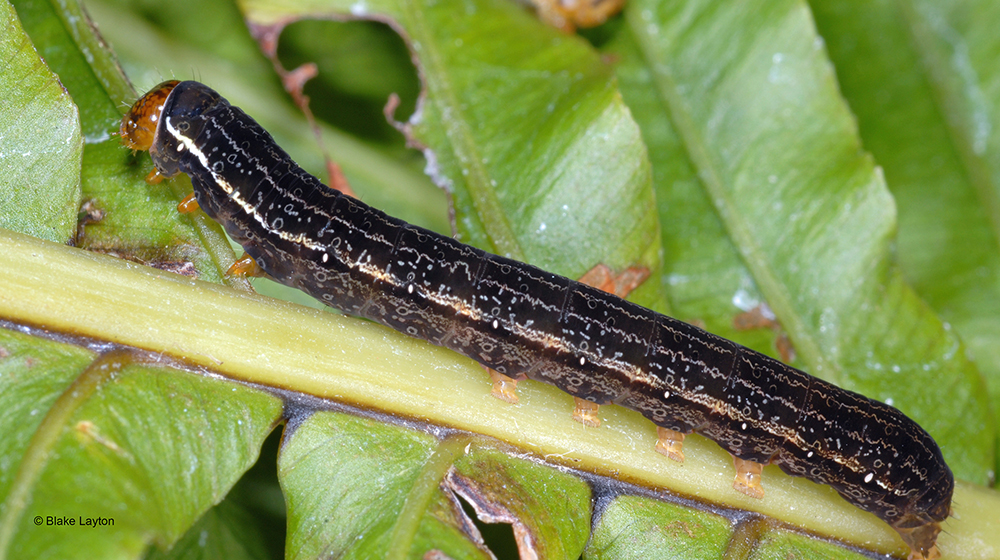Florida Fern Caterpillar | Vol. 3, No. 24

Callopistria floridensis
Order: Lepidoptera
Family: Noctuidae
Got something chewing on your hanging ferns? Florida fern caterpillars specialize in feeding on ferns, a group of plants that is relatively free of insect pests. Apparently this caterpillar is not affected by the phytoecdysone compounds in ferns that interfere with insect growth and development. Florida fern caterpillars are especially common on Boston and Kimberly Queen ferns, but also occur on many other species, including holly fern and asparagus fern. Infested ferns will initially appear somewhat tattered and defoliation will be obvious on closer examination. Also, the floor underneath infested ferns will have accumulations of fecal pellets. Heavy infestations can cause severe damage.
Florida fern caterpillars are about 1.5 inches long when mature and vary in color from green with dark markings to brown or velvety black with fine light-colored markings. Young caterpillars prefer to feed on young expanding fronds, but older caterpillars will feed on older foliage. These moths are native to Florida and other tropical areas but can appear in greenhouses farther north. Infestations of Florida fern caterpillars heavy enough to require treatment are not uncommon in commercial greenhouses. Infestations on ferns in homes are most often due to plants being infested when purchased.
Control: Go ahead and pick off the ones you can find, but you probably won’t be able to find them all. The larger dark-colored specimens are fairly easy to spot but newly hatched caterpillars are easy to overlook. Spray with an insecticide containing the active ingredient spinosad. This is easy to find at lawn and garden centers. Fertilome, GreenLight, Bonide, Monterey, Natural Guard, and others all sell formulations of spinosad for homeowner use. Conserve SC (spinosad) is a good choice for commercial fern producers. For best control, plan on applying two or three successive sprays at weekly intervals, taking care to get good spray coverage to the lower interior fronds. “Bt products” containing toxins produced by Bacillius thuringineisis bacteria are slower acting and usually somewhat less effective, but can still work. Just be sure to choose a Bt that is labeled for caterpillar control. Strains of Bts used for mosquito control do not work on caterpillars—nor do the caterpillar Bts work on mosquitoes.
Blake Layton, Extension Entomology Specialist, Mississippi State University Extension Service.
The information given here is for educational purposes only. Always read and follow current label directions. Specific commercial products are mentioned as examples only and reference to specific products or trade names is made with the understanding that no discrimination is intended to other products that may also be suitable and appropriately labeled.
Sign up to receive Bug's Eye View.

